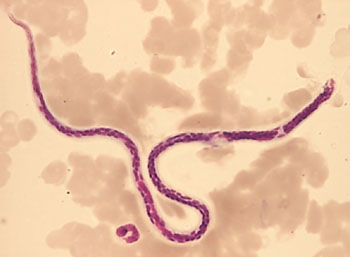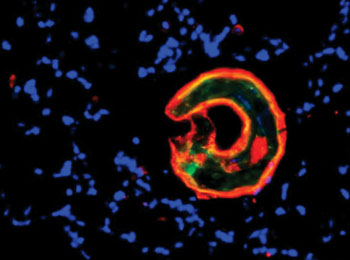Common Human Protein Linked to Adverse Parasitic Worm Infections
By LabMedica International staff writers
Posted on 22 Jan 2015
Parasitic helminths, which infect an estimated two billion people worldwide, represent a significant global public health problem and infection is associated with life-long morbidity including growth retardation and organ failure.Posted on 22 Jan 2015
The great variability in the host immune response to helminths exists, with the ability of some individuals to develop immunity, while others are susceptible when re-exposed or maintain lifelong chronic infections. Identifying new factors that are differentially expressed in immune versus susceptible individuals could provide new targeting strategies for diagnosis or treatment of helminth infection.
Scientists at the University of California, Riverside (CA, USA) collaborating with an international team, used a mouse model and human samples of serum and feces to study the immune response to helminth infection. Serum and feces were collected from 51 uninfected or 49 soil-transmitted helminth (STH)-infected school children and helminth eggs in the feces were quantified by a modified Kato Katz or formol-ether concentration protocol. For filarial-infected individuals, blood was collected and circulating microfilariae were previously quantified, and the patient group consisted of 44 Wuchereria bancrofti-infected patients and 17 endemic normal individuals.
Custom assay kits were used to measure various analytes (R&D Systems; Minneapolis, MN, USA) were run and quantified on the Luminex 200 analyzer (Luminex Corp., Austin, TX, USA). In the animal studies, mice containing the gene expressing human resistin and infected with a parasitic worm similar to the human hookworm experienced excessive inflammation, leading to increased weight loss and other symptoms. Clinical samples from two groups of individuals from the south Pacific island of Mauke and from Ecuador, one group infected with filarial worms causing lymphatic filariasis and a second group infected with intestinal roundworms Ascaris, revealed increased levels of resistin in the infected individuals compared to those who were uninfected or immune.
The authors concluded that expression of human resistin in mice recruits inflammatory monocytes to the site of infection, promotes type 1 inflammation, and is correlated with increased STH and filarial nematode burden in humans. The ability of the human resistin impairs immunity to helminths and promotes inflammatory responses that may mediate pathology. Targeting resistin may therefore provide new approaches to host-directed treatment strategies for helminth infection and amelioration of the associated immune-mediated pathology. They suggest a diagnostic potential for resistin as a new biomarker for impaired immune responses to worms. The study was published on January 8, 2015, in the journal Public Library of Science Pathogens.
Related Links:
University of California – Riverside
R&D Systems
Luminex Corp.
















